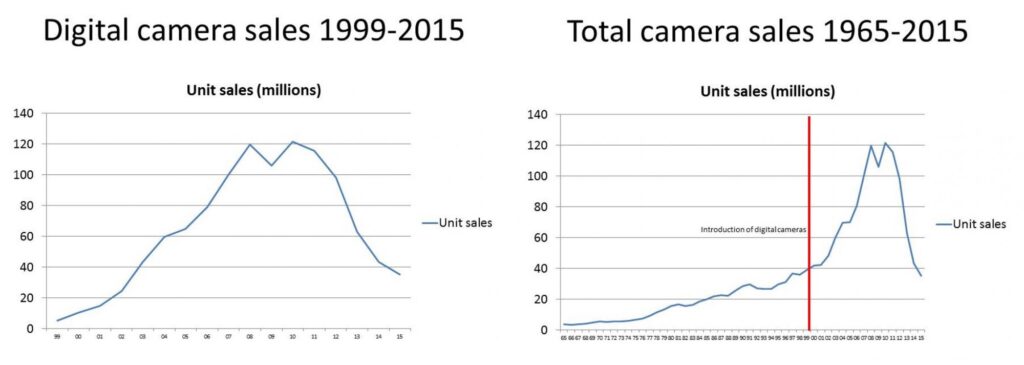Most people consider the digital compact as the replacement of the point-and-shoot film camera. They were much more than that. Digital cameras did not “overthrow” the analog camera market. Yes, analog sales collapsed after 1997, but total camera sales did not slow down. Digital cameras augmented the market, similar to the Nintendo Wii, which did not compete against the Xbox 360 and PlayStation 3, but extended the target audience of gaming consoles.

It’s worth noting that something similar happened with smartphones: from 120 million sold in 2007 sales reached 1.5 billion by 2017, and with that, the democratization of photography practically completed.
These tectonic shifts were not driven by DSLRs or high-end products, but by cheap, mass-produced, pocketable cameras that were easy to use and just “good enough”. Although CIPA did not track the exact sales figures within the non-interchangeable lens category, I’m sure the vast majority of the 100 million units were not from the premium compact or bridge segment. Given that the 2010-2012 period saw significant advances in smartphone photography (the Galaxy S3 with its rather competent camera was released in 2012) compact cameras after that period were all about the zoom. Funnily enough, from 2023 onward compact cameras are gaining popularity again, albeit in a new costume: they are called vlogger cameras these days.
History aside, I think most of us can relate to compact cameras more than DSLRs or other “photographer’s cameras”. Few families had a photo nerd at home, and those who didn’t, recorded their memories using digital point-and-shoots. The same applies to me, and several pieces in my collection are only there, because I was photographed with them, or used them at some point in my life.